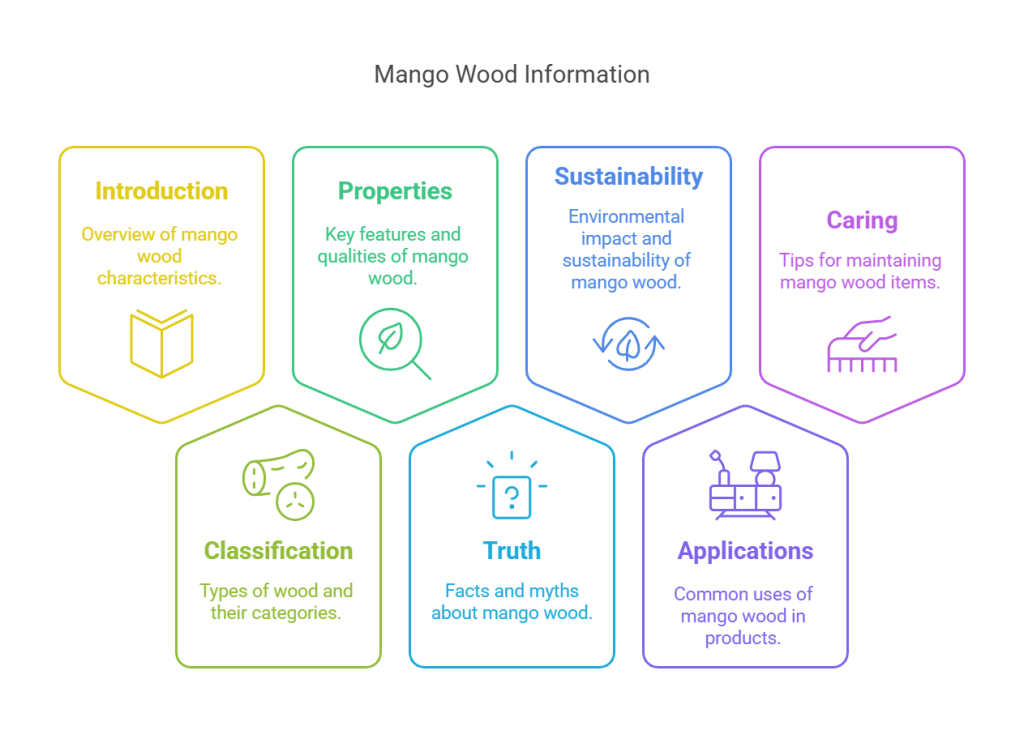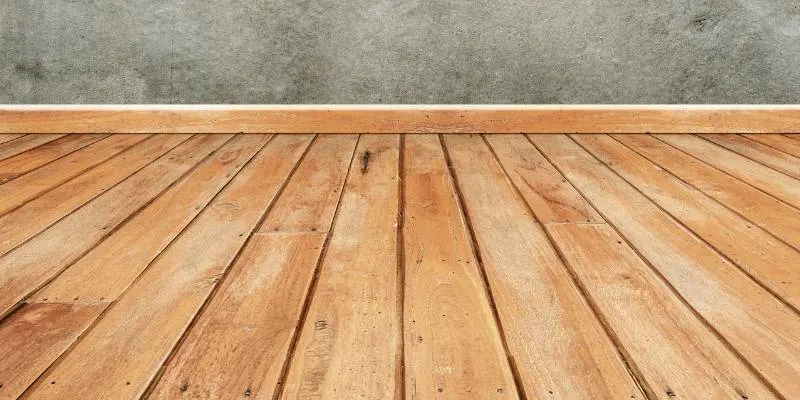Mango wood is considered hardwood. It comes from the mango tree, known for its durability and strength.
Mango wood is gaining popularity for various applications, including furniture and decor. Its natural beauty and rich color make it an appealing choice for artisans and homeowners alike. The mango tree, primarily found in tropical regions, grows quickly and sustainably.
This makes mango wood an eco-friendly option compared to traditional hardwoods. Its unique grain patterns add character to each piece, ensuring no two items are alike. With its resilience and aesthetic appeal, mango wood is an excellent choice for those seeking quality without harming the environment. Understanding the properties of mango wood can help you make informed decisions for your next project.
Introduction To Mango Wood
Mango wood comes from the mango tree, which is native to South Asia. These trees can grow up to 100 feet tall and live for many years. The wood has a beautiful color, often golden yellow or dark brown. This makes it a popular choice for furniture.
Mango trees thrive in tropical climates. They require a lot of sunlight and water. The trees start producing fruit after about 3 to 6 years. After that, they continue to grow for many more years.
Mango wood is not just for making furniture. It is also used for carvings, flooring, and musical instruments. Its durability and strength make it a great choice for many projects.
Classification Of Wood Types
Mango wood is classified as hardwood. It comes from deciduous trees, which lose their leaves. This type of wood is known for its strength and durability.
Hardwoods are generally denser than softwoods. Common hardwoods include oak, maple, and cherry. Softwoods come from coniferous trees, like pine and cedar. They are usually lighter and grow faster.
| Factor | Hardwood | Softwood |
|---|---|---|
| Density | Higher | Lower |
| Growth Rate | Slower | Faster |
| Uses | Furniture, Flooring | Construction, Paper |
Factors determining wood type include tree species, growth environment, and wood structure. Each factor helps define the wood’s characteristics and quality.

Mango Wood Properties
Mango wood is known for its beautiful appearance and unique color. The physical attributes include a rich golden hue and a fine grain. This wood is often smooth and has a lovely sheen.
In terms of durability, mango wood is quite strong. It resists wear and tear well, making it ideal for furniture. The wood is not as hard as some other hardwoods, but it is still sturdy.
Workability is another strong point. Carpenters find mango wood easy to cut and shape. It holds nails and screws well, making it a favorite for many projects.
The Truth About Mango Wood
Mango wood is indeed classified as hardwood. It comes from the mango tree, known for its strength. This type of wood is durable and has a beautiful grain.
Compared to other woods, mango wood is lighter than oak but stronger than pine. It also has a rich color that enhances furniture and decor.
| Type of Wood | Hardness | Weight |
|---|---|---|
| Mango | Hardwood | Light |
| Oak | Hardwood | Heavy |
| Pine | Softwood | Light |
Sustainability Of Mango Wood
Mango wood is known for its sustainability and environmental benefits. It comes from mango trees that bear fruit. Once trees no longer produce fruit, they are often cut down. This process helps reduce waste and provides renewable resources.
Sourcing mango wood is generally responsible. Many suppliers follow ethical practices. They ensure that wood is harvested from well-managed forests. This promotes a healthier environment and supports local communities.
| Aspect | Details |
|---|---|
| Renewability | Harvested after fruit production ends |
| Environmental Impact | Reduces waste from fruit trees |
| Sourcing | Follows ethical and sustainable practices |

Applications Of Mango Wood
Mango wood is popular for making beautiful furniture and decor items. Its rich color and unique grain patterns make each piece special. Many artisans use mango wood to create stunning tables, chairs, and cabinets.
The wood is not only attractive but also very strong. This strength makes mango wood ideal for daily use. It can withstand wear and tear, making it perfect for homes with kids and pets.
Craftsmen appreciate mango wood for its workability. It is easy to shape and finish. This quality allows for intricate designs and detailed carvings.
Overall, mango wood combines style and practicality. It offers both beauty and durability for various applications.
Caring For Mango Wood Products
Caring for mango wood products is important for their longevity. Regular cleaning keeps them looking great. Use a soft, damp cloth to wipe surfaces. Avoid harsh chemicals that can damage the finish.
Apply a wood conditioner every six months. This helps maintain the natural beauty of mango wood. Store items in a cool, dry place to prevent warping. Keep them away from direct sunlight to avoid fading.
| Maintenance Tip | Frequency |
|---|---|
| Wipe with damp cloth | Weekly |
| Apply wood conditioner | Every 6 months |
| Check for damage | Monthly |
Following these tips helps keep mango wood products beautiful for years. Enjoy their charm and durability in your home.

Frequently Asked Questions
Is Mango Wood Considered Hardwood?
Yes, mango wood is classified as hardwood. This is due to its density and strength. It comes from the mango tree, which is a deciduous species. Mango wood is often used for furniture and cabinetry due to its durability and attractive grain.
What Are The Benefits Of Mango Wood?
Mango wood offers several benefits. It is eco-friendly, as it uses trees that have already been harvested for fruit. The wood is also durable and resistant to wear. Additionally, its unique grain patterns make it visually appealing for various applications.
How Durable Is Mango Wood Furniture?
Mango wood furniture is quite durable. It can withstand daily use and is resistant to scratches. However, it requires regular maintenance to keep its appearance. Proper care can extend the lifespan of mango wood furniture significantly.
Is Mango Wood Sustainable?
Yes, mango wood is considered sustainable. It utilizes trees that are grown primarily for fruit production. Once the trees mature and stop producing fruit, they are harvested for wood. This practice promotes environmental sustainability and reduces waste.
Conclusion
Mango wood is indeed classified as hardwood. Its durability and beautiful grain make it popular for furniture and crafts. Choosing mango wood supports sustainable practices, as it comes from a renewable resource. Overall, this versatile wood combines aesthetics and functionality, making it an excellent choice for various applications.

